Integrating biodiversity conservation in forest management
WHY?
European forests have been altered by management actions aimed at timber production for millennia. Forest habitats acknowledged by the Habitat Directive (92/43/EC) make no exception, and in the last State of nature in the EU Forestry is reported as the main pressure to forest habitats, of which about 80% are in an unfavourable conservation status.
The current indicators of forest sustainability are mostly based on forest stand structure and landscape properties that may, but not always are, related to forest biological diversity.
WHO?
The COST Action BOTTOMS-UP aims at increasing the degree of the biodiversity sustainability of European forest management. The project gathered the most comprehensive knowledge of European multi-taxonomic forest biodiversity through the collaboration of research groups that collect data locally.
The conference is particularly directed towards forest managers, researchers, decision makers, Natura 2000 site managers and NGOs involved in forest and biodiversity management.
WHAT?
The conference will showcase the project results, with a focus on:
- harmonizing methods for the monitoring of forest multi-taxonomic biodiversity;
- increasing the sustainability and biodiversity through forest management, improved planning and management practices.
The event will include a 2-day seminar with talks in the morning, and moderated discussions with stakeholders in the afternoon. The discussions will start from two drafts of policy briefs prepared by BOTTOMS-UP covering the two conference topics.
An excursion is held on the third day to the mountains within the Province of Rome. The excursion will cover three different forest habitats with different management issues (protection forests around water catchments, extensively managed chestnut groves, long unmanaged beech forests) where forest monitoring and management will be discussed.

One of the views of Rome taken during a walk across the Botanica Garden
WHEN?
WHERE?
FUNDING
19-21 March 2024
WHEN?
19-21 March 2024
Rome, botanical garden in the hearth of Trastevere district.
WHERE?
Rome, botanical garden in the hearth of Trastevere district.
The conference will accept 101 registered participants, among which a maximum of 68 may qualify for travel reimbursement. There are no registration fees, but only a nominal fee of 15 euros per day for lunches, to be paid online in order to confirm your participation.
FUNDING
The conference will accept 90 registered participants, among which a maximum of 50 may qualify for travel reimbursement. There are no registration fees, but only a nominal fee of 10 euros per day for lunches, to be paid on site.
IMPORTANT DATES
Sabina Burrascano
Theo Van der Sluis
Peter Odor
Francesco Chianucci
Sebastian Kepfer-Rojas
Tommaso Sitzia
Flora Tinya
Inken Doerfler
Yoan Paillet
Thomas Andrew Nagel
Giovanni Trentanovi
Peter Schall
Bjorn Norden
Kris Vanderkerkhove

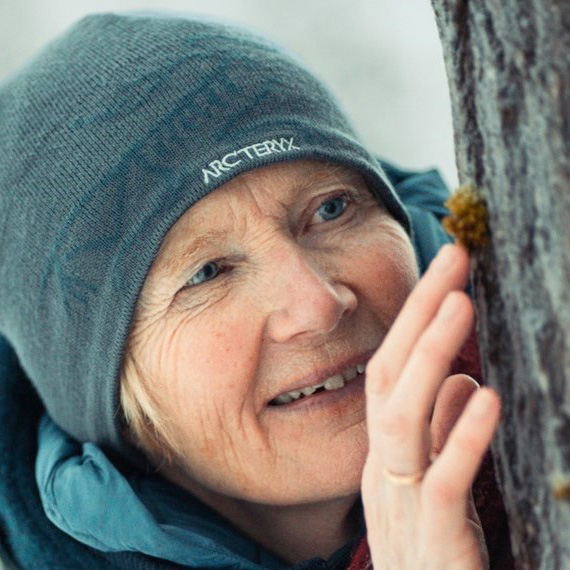 Lena Gustafsson’s research is applied and directed towards biodiversity and conservation in forests, especially evaluation and development of knowledge on effects and efficiency of conservation actions, and how such can be combined with forest management. She is interested in processes and structures that drive species dynamics in natural as well as managed forests, and how such insights can be used in conservation strategies. A strong motivation for her research is to relate to topical questions in forest and conservation practice and policy, and to do this in a wide international context. Lena Gustafsson is a plant ecologist and often use epiphytic bryophytes and lichens as model organisms.
Lena Gustafsson’s research is applied and directed towards biodiversity and conservation in forests, especially evaluation and development of knowledge on effects and efficiency of conservation actions, and how such can be combined with forest management. She is interested in processes and structures that drive species dynamics in natural as well as managed forests, and how such insights can be used in conservation strategies. A strong motivation for her research is to relate to topical questions in forest and conservation practice and policy, and to do this in a wide international context. Lena Gustafsson is a plant ecologist and often use epiphytic bryophytes and lichens as model organisms.

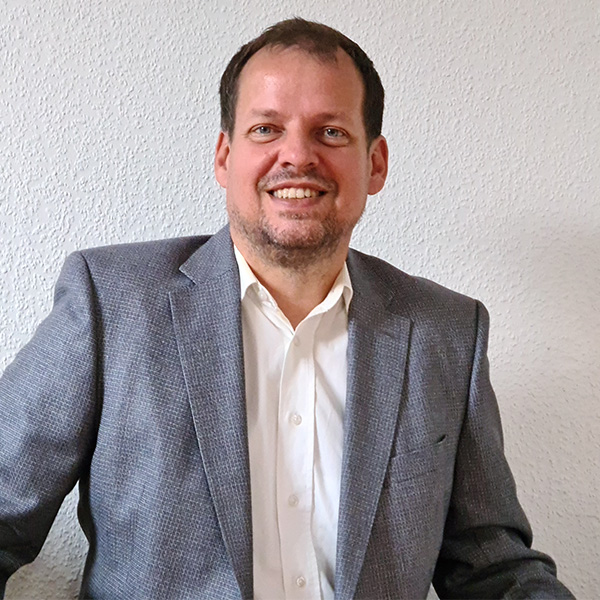 Georg Winkel (male) is Professor (full) and Chair of the Forest and Nature Conservation Policy Group at Wageningen University, the Netherlands. His main research interests encompass forest and conservation policy, the role of knowledge and discourses in policy making, and (environmental) sociology relating to forests and nature. He holds an MSc (Forest Sciences) and a PhD (Forest and Environmental Policy) from University of Freiburg, Germany. Previously he has been working at the European Forest Institute, Joensuu (2015-217) and Bonn (2017-2021) and at the University of Freiburg (2001-215). He also spent one year at the University of California, Berkeley, in 2011.
Georg Winkel (male) is Professor (full) and Chair of the Forest and Nature Conservation Policy Group at Wageningen University, the Netherlands. His main research interests encompass forest and conservation policy, the role of knowledge and discourses in policy making, and (environmental) sociology relating to forests and nature. He holds an MSc (Forest Sciences) and a PhD (Forest and Environmental Policy) from University of Freiburg, Germany. Previously he has been working at the European Forest Institute, Joensuu (2015-217) and Bonn (2017-2021) and at the University of Freiburg (2001-215). He also spent one year at the University of California, Berkeley, in 2011.
On March 21st the local organizing committee will guide the conference participants across three different forests habitats of the Habitat Directive Annex 1, surprisingly all located within the Metropolitan City of Rome.
Only one hour by bus from the heart of Rome will allow to discover three interesting forests within the Prenestini Mountains. This mountain chain (highest peak 1,218 meters a.s.l.) is part of the anti-Apennine system, which lies between the coast of the Italian peninsula and the inner Apennine chain. As such, anti-Apennine chains encompass a wide range of environmental conditions, and host both strictly Mediterranean and temperate ecosystems and species.
Valle delle Cannuccete
We will visit a forest included in the habitat Tilio-Acerion forests on slopes, screes and ravines (9180*) in the Valle delle Cannuccete. This mixed forest has a high diversity of tree species (Acer pseudoplatanus, Acer opalus, Carpinus betulus, Tilia cordata) that develop on the abrupt rocky slopes surrounding a permanent stream.
The forest is protected as a Special Area of Conservation and a Natural Monument. It is interestingly surrounded by sub-mediterranean vegetation but extremely mesophilous, due to the occurrence of several natural springs related to the alternate layers of marls and limestone of the valley. The water of these springs is collected for the use of the surrounding towns. In fact, the forest has mainly a protection function, and, as such, it was not actively managed for timber production for at least 100 years.
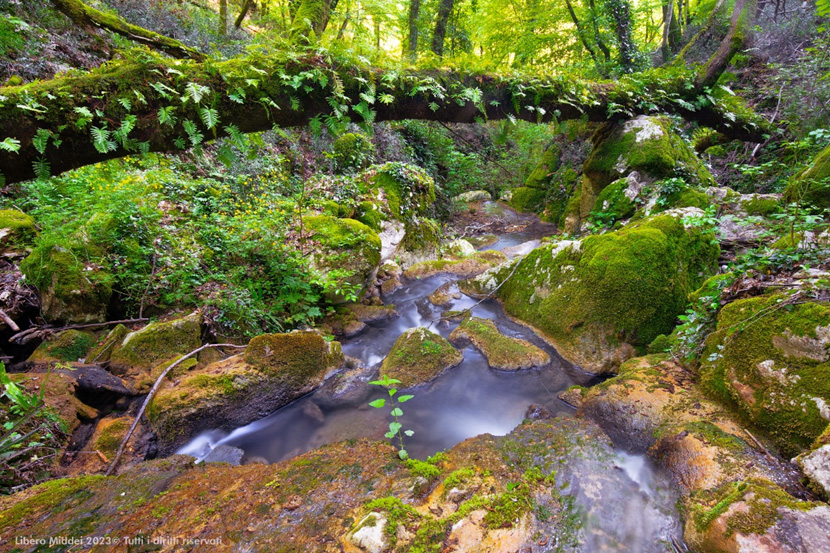
The stream of the Valle delle Cannuccete surrounded by a dense Tilio-Acerion forest. Photo: Libero Middei.
Castagneto Prenestino
The second stop will feed the discussion on the cultural value of some forest habitats. We will visit the Natural Monument of Castagneto Prenestino, which is an extensively managed chestnut grove, including also unmanaged parcels.
This area may be referred to the habitat 9260 (Castanea sativa woods), but its uniqueness lies in its cultural value. In fact, this chestnut forest is one of the very few areas in which the collected chestnuts are dried through a 40 days smoking process in traditional small buildings within the forest. This unique process involving the local populations was the starting point to include the dry chestnuts here produced within the Slow Food Presidiums, i.e., products under a specific protection based on the excellence that follow traditional practices.
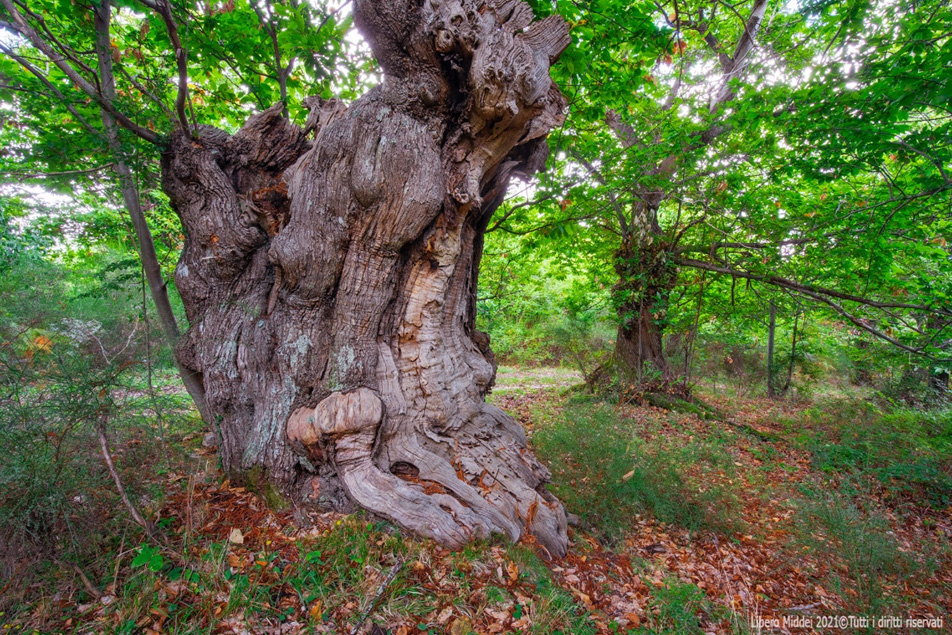
Old chestnut trees in the Natural Monument of Castagneto Prenestino. Photo: Libero Middei
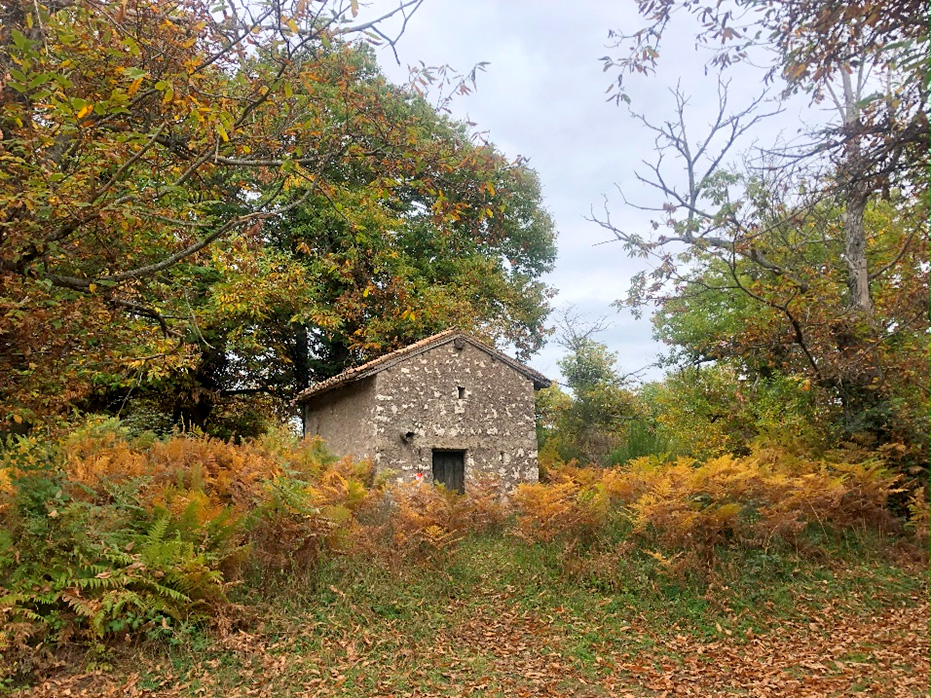
The small buildings used to dry the collected chestnuts. Photo: Sabina Burrascano.
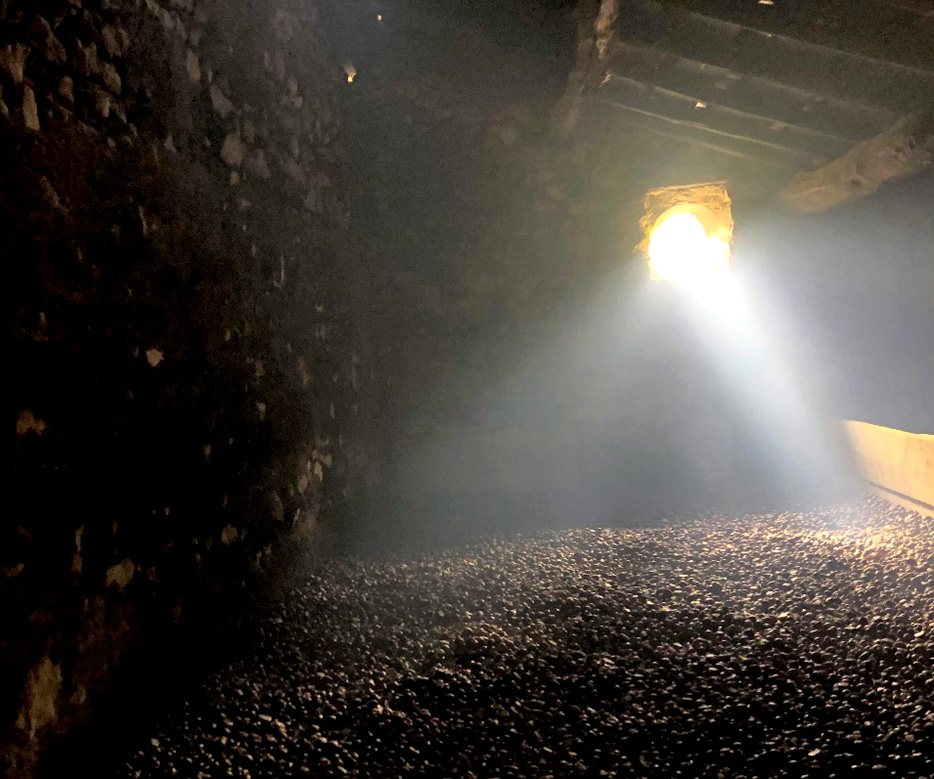
Chestnut drying in the mezzanine of the small building through the smoke produced at the ground floor. Photo: Sabina Burrascano
Beech forest of the Santuario della Mentorella
The north-eastern slope of the Prenestini mountains is a scarp slope and as such much steeper than the south-western slope, which gently declines toward alluvial plains and volcanic hills around Rome.
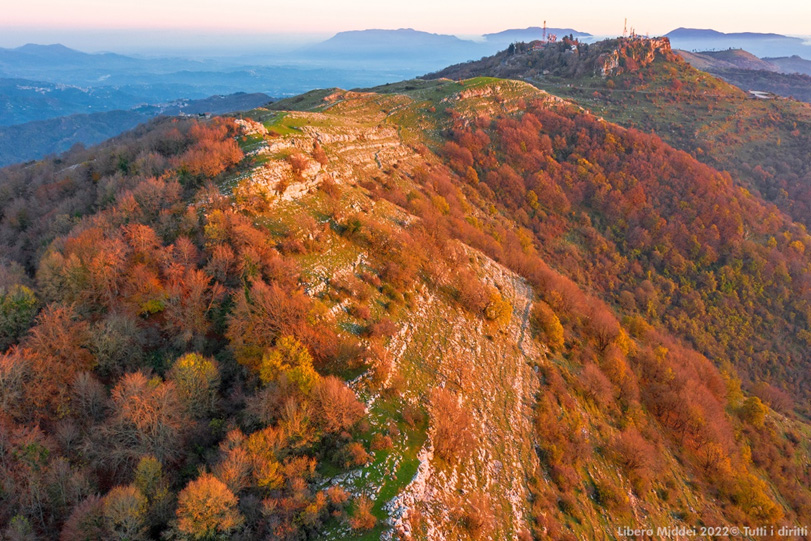
The ridge of the Prenestini mountains, separating the warmest and gentler south-western slope from the colder and steeper north-eastern slope. Photo: Libero Middei.
The eastern slope have always been more isolated and remote, and hosts a Benedictine Sanctuary, the Santuario della Mentorella.
In the proximity of the Sanctuary, after a short walk across recently established secondary forests dominated by maple species (Acer campestre, Acer monspessulanum) and Quercus pubescens, it is possible to visit a beech forest with legacies of a coppice silviculture, currently including several large and senescing trees as well as standing and lying deadwood.
This beech forest may be referred to the priority habitat Apennine beech forests with Taxus and Ilex (9210*), which includes the thermophilous beech forests of the Apennines.
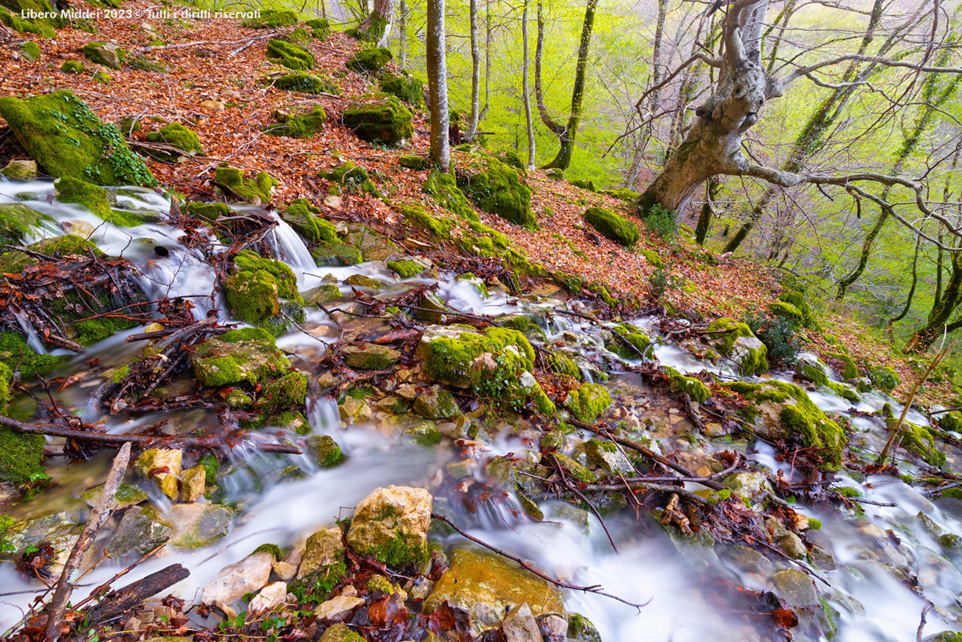
The beech forest near the Benedictine Sanctuary of the Mentorella. Photo: Libero Middei.
How to get there:
The Venue is in the center of Rome, Largo Cristina di Svezia 23A (venue coordinates).
You can travel to Rome by train, arriving in the station of Roma Termini, or by plane landing in one of the two international airports Rome Fiumicino (FCO) or Ciampino (CIA).
From the Fiumicino airport you have a direct train connection to the Trastevere area (Station: Roma Trastevere) by using the urban train line FM1. Train tickets may be purchased online (https://www.trenitalia.com/en.html) or at the airport vending machines.
From the Ciampino airport the most direct way to reach Rome is to use shuttle buses that would bring you to the Roma Termini train station. You can choose between SitBus (https://www.sitbusshuttle.com/en/) and Terravision (https://www.terravision.eu/airport_transfer/bus-ciampino-airport-rome/?noredirect=en_US).
Local transport tickets may be bought through the app MooneyGo(myCicero).
Where to stay:
There are hundreds of house and room rentals in the Trastevere district or nearby.
If you look for a lower price, you can take advantage of religious hospitality, one very close to the venue is the Casa San Giuseppe (https://www.casasangiuseppe.it/). Linked is the Italian website, no English version found but you may use an automatic translator.
If you look for a fancier location, you can contact the Hotel Trastevere (https://www.hoteltrastevere.it/en/).





